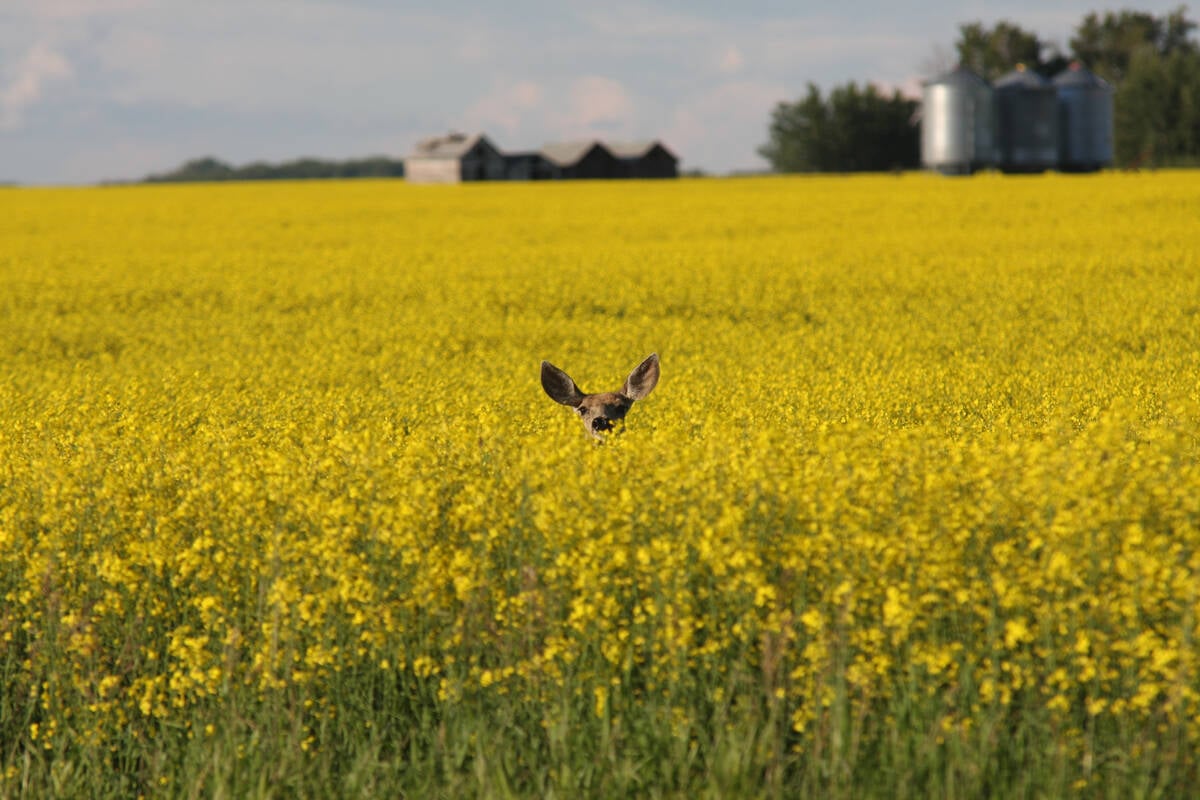For years, military analyst Gwynne Dyer paid little attention to discussions about climate change.
Eventually, however, he started to connect the dots that link the looming issue with future geo-political considerations.
The newspaper columnist’s interest was first piqued by the cryptic phrase, “lifeboat Britain,” uttered in a private conversation by an official from a military think-tank. So he started digging.
Eventually, Dyer discovered that British plans to spend $60 billion on new nuclear weapons was based on a top secret scenario – one that predicts a rise in global temperature of just 2.6 C above 1990 levels would drastically reduce the world’s food supply, especially in countries nearest the equator.
Read Also

Drones now used to assess wildlife crop damage in Saskatchewan
Wildlife damage in Saskatchewan crops is now assessed by drones and artificial intelligence.
“It assumes that we didn’t do what we should have done in the teens of this century, which is get the emissions down fast,” said Dyer, who was invited to speak at Assiniboine Community College’s Prairie Innovation Forum.
“And so we are committed in the 2040s to very serious global warming.”
Britain, an island nation of 60 million, would be spared from droughts and scorching heat due to its northern latitude.
It would not, however, be able to avoid an onslaught of desperate refugees seeking to enter the country at any cost, nor possible blackmail by nuclear-armed governments intent on corralling enough food to ward off the starvation of their populace after world grain exports dry up.
Anthropologists point out that groups of humans always raid neighbours before they starve, Dyer said.
“I don’t know if that applies to large industrialized countries, but I’d really rather not find out,” he said.
“This scenario assumes that it may well apply. And that is the justification for a new generation of nuclear weapons, to stare the blackmailers down.”
The data used in creating the 2007 Intergovernmental Panel on Climate Change (IPCC) is at least five years old and already out of date. Dyer said the latest numbers suggest climate change is happening much faster than anticipated.
“None of the feedbacks are taken into account. The IPCC admits this; it’s there in the small print. It says, ‘we’re not attempting to estimate the impact of the carbon sinks in the ocean shutting down or the melting of the permafrost because we can’t model it.’ “
At the same time, the world is much closer to the edge in terms of global food supply than most people realize, said Dyer.
While the gains from five decades of green revolution technology have enabled the world’s population to triple to 6.5 billion, the free ride may soon end.
Improved crop varieties account for no more than 25 to 30 percent of the gains achieved. The rest is attributable to the use of chemical fertilizers and the tripling of irrigated acres.
“Mostly, we threw fossil fuels at it. We are now putting 10 or 11 times as much fertilizer on the land as we did in 1945,” he said.
“But we are reaching the end of the bag of tricks. There’s no second green revolution around the corner that I can see.”
World grain produc-tion, which grew at more than two percent a year for five decades, has in the last 10 years stagnated, even as the world’s population continues to grow.
“Even if there were no climate change, we’d have a problem. How do you feed the next two billion?”
According to some global warming models, high temperatures will increase the intensity of a climate phenomenon called the Hadley cells, which are circulating currents of air that drive the trade winds and create the world’s deserts where they hit the earth’s surface.
“The world’s deserts are not randomly distributed in attractive patterns. They exist in two belts. Find an old globe, the ones where they paint the deserts yellow, and give it a spin, and the deserts will blur into those two belts,” said Dyer.
“When you inject more heat into the system, the Hadley cells expand and that hot, dry air comes down farther away from the equator right on top of the breadbaskets where we grow most of the world’s grain,” said Dyer.
“These are the areas that take the big hits, from 50 to 75 percent cuts in rainfall. That’s where you lose your food supply.”
A two percent rise in average global temperature would mean 25 percent less food production in India, according to studies done there.
“There’s a billion people in India. If you assume that everywhere else is taking comparable hits and there isn’t that much left in the way of international grain market, that’s 250 million people without food.”
China, according to a report released two years ago, faces a 39 percent reduction under the same scenario.
“That’s 400 million people without food,” said Dyer. “What’s the timeline? About 2040.”
Cutting carbon emissions in developed countries could be done without too much hardship, he said. The trick will be to convince rapidly developing nations to retool their growth based on cleaner but more expensive technologies such as wind, solar and nuclear.
“They haven’t got the money. The deal that’s got to be done is that we pay the difference between the cheap and dirty coal-fired station and the wind farm or nuclear station. Both we and they know that’s the real answer.”














